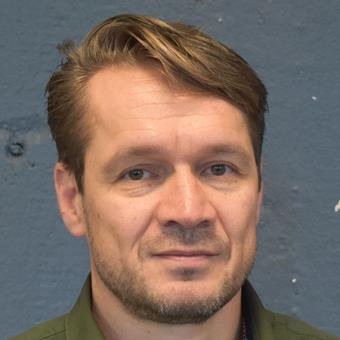TSBB19 Machine Learning for Computer Vision
This course gives a theoretical and practical introduction to machine learning tasks in computer vision. Theory is introduced in a series of lectures that present and illustrate current methods for object recognition, detection and tracking. The course also has two small projects that are solved in groups. Projects are presented both in written form and orally, at two seminars. The course ends with a written exam on the theoretical content.

General Information
- Course syllabus
Course syllabus can be found in the Study guide.
- Registration
The 2023 course starts on August 28. To receive emails about the course and to have your results entered into Ladok you must be registered on the course. If you intend to take the course but have not yet registered, make sure to do it promptly through Ladok, or via the Student Portal Lisam.
- Schedule
The course schedule can be found in TimeEdit.
- Examination
See the examination page.
People
 |
 |
 |
| Per-Erik Forssén | Michael Felsberg | Bastian Wandt |
| Lectures, Examiner | Lectures | Lectures |
 |
 |
 |
 |
 |
| Ziliang Xiong | Johan Edstedt | Pavlo Melnyk | Cuong Le | Emanuel Sanchez Aimar |
| Supervisor | Supervisor | Supervisor | Supervisor | Supervisor |
Course material
The main course material consists of lecture slides, and selected articles. We also recommend the two books listed below for a more in-depth treatment of the content.
- Course GIT repositories
The course has three GIT repositories. These are hosted in LiUs GitLab (accessible to anyone with a LiU login). One repository contains the course material (e.g. lecture slides, and articles for background reading), and the other two contain support code for the projects.
- Book 1:
Goodfellow et al., Deep Learning, MIT Press (2016).
Relevant contents: Theory on machine learning, convolutional neural networks, loss functions, and regularization.
The book is available as full pdf. See also Book webpage. - Book 2:
Richard Szeliski, Computer Vision: Algorithms and Applications, 2nd ed., Springer Verlag (2022).
Relevant contents: classical computer vision, feature extraction, optimization.
The book is available as an on campus e-book via the LiU library. See also Book webpage.
Lecture Schedule HT2023
Before the lectures, the lecture slides from last year can be found in the course material repository. Updated slides will be pushed after the lecture has taken place. The repository also contains additional relevant literature for each lecture.
| Date,Time,Room | Activity | Teacher |
|---|---|---|
|
August 28: 08.15-10 ACAS |
Lecture 1 Introduction |
Per-Erik Forssén |
|
August 29: 10.15-12 ACAS |
Lecture 2 Feature Descriptors |
Per-Erik Forssén |
|
August 30: 13.15-15 ACAS |
Lecture 3 Convolutional Neural Networks: Introduction and Theory |
Michael Felsberg |
|
September 1: 8.15-10.00 ACAS |
Lecture 4 Image Classification with Convolutional Neural Networks |
Michael Felsberg |
|
September 5: 10.15-12 KY35 |
Lecture 5 Project 1: Image Classification |
Per-Erik Forssén |
|
September 6: 13.15-15 R41 |
Lecture 6 Compound Descriptors, Metric Learning, and Evaluation |
Per-Erik Forssén |
|
September 8: 8.15-10 ACAS |
Lecture 7 Visual Object Detection |
Per-Erik Forssén |
|
September 20: 13.15-15 S23, S25 |
Seminar 1 Presentation of project 1 |
Per-Erik Forssén Bastian Wandt |
|
September 20: 15.15-17 S26 |
Lecture 8 Semantic and Panoptic Segmentation using CNNs |
Bastian Wandt |
|
September 22: 8.15-10 ACAS |
Lecture 9 Project 2: Semantic Segmentation |
Per-Erik Forssén |
|
September 26: 10.15-12 A32 |
Lecture 10 Visual Object Tracking with Deep Features |
Bastian Wandt |
|
October 11: 13.15-15 ACAS, A32 |
Seminar 2 Presentation of project 2 |
Per-Erik Forssén Bastian Wandt |
|
October 11: 15.15-17 ACAS |
Seminar 2 Discussion of project 2 and exam |
Per-Erik Forssén Bastian Wandt |
A more extensive schedule can be found in TimeEdit. It also contains scheduled project time (labelled "Projekttid"). These are times when you have exclusive access to the computer rooms Olympen and Asgård. TimeEdit also lists backup lectures. Note that teachers will only be present at activities listed in the table above.
Projects
The projects are conducted in groups of 5 or 4 students (in order of preference).
Groups and supervisor assignments are finalized at the introductory
lecture of project 1, and will be published in the course
repository.
Project 1: Visual Object Recognition
- Important dates:
Introductory lecture September 5 Report to supervisor September 14 Report due September 17 (a Sunday) Presentation seminar September 20 - Course material for project 1
- GIT for project 1 utility code
Project 2: Semantic Segmentation
- Important dates:
Introductory lecture September 22 Report to supervisor October 5 Report due October 8 (a Sunday) Presentation seminar October 11 - Course material for project 2
- GIT for project 2 utility code
General resources
We recommend using the following software:
- PyTorch A deep learning framework for Python (support code for the projects is written for PyTorch).
- PyCharm A Python IDE (installed in Olympen and Asgård).
Other related software of interest:
- OpenCV (Open Source Computer Vision) library that is installed at ISY labs. Python bidnings exist.
- VLFeat has a a useful code library, both for Matlab and C/C++.
- LIBSVM A Library for Support Vector Machines (Matlab, Python).
Project Repositories
Project code should be developed under versioning control, with changes tracked according to LiU-ID of the participating group members.
Project groups should get their repositories from GITLab at LiU.
Note: this is not GitHub, and GitHub should not be used.